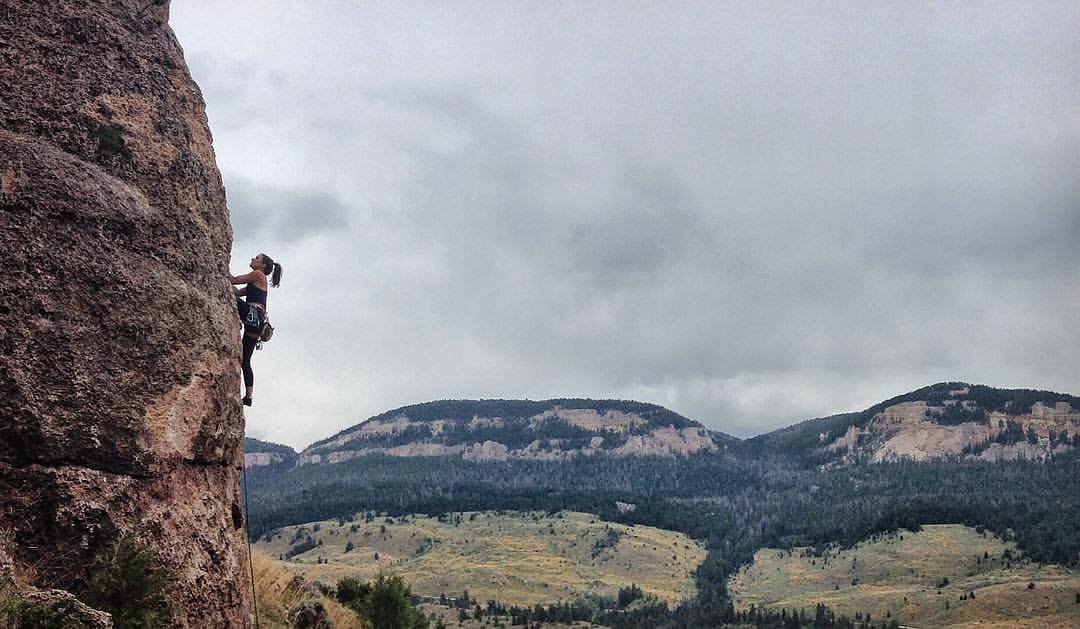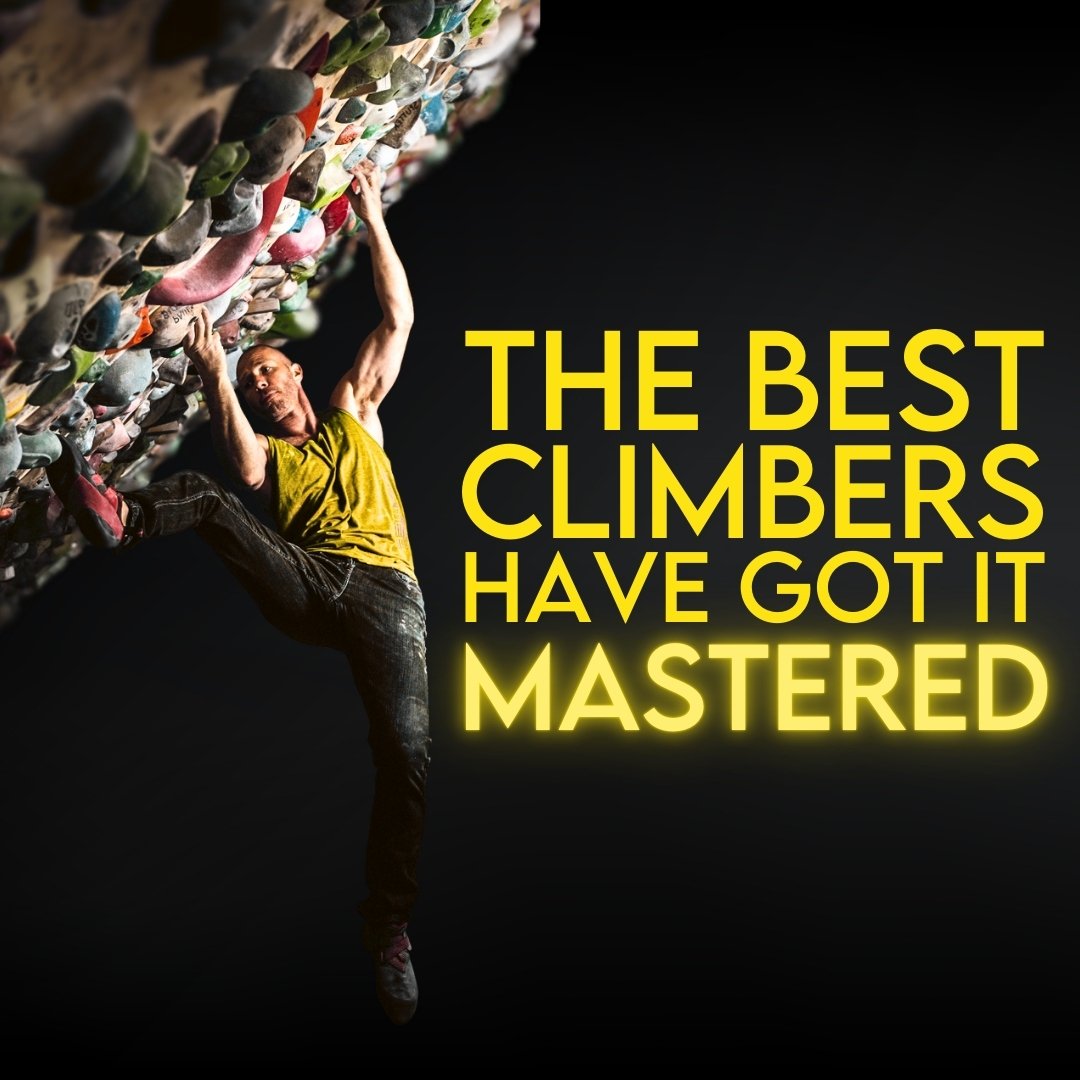Taped Tips | Stop Applying Training Principles to Climbing Performance
Performance is, by definition, an entirely different monster than training.
I would love to assume you already know that, but it’s worth saying. Worth it because for some reason, more and more often, I hear training principles start to appear in the performance environment. Worse, they are often misunderstood, misinterpreted training principles.
“I’m not going to try it again because you should only try really hard things when fresh. I’m a little tired, so I’ll wait until next week to maximize my skill adaptation potential.”
“Volume isn’t good for building tendon strength, so I’m going to cut it short today. I’ve done 27 moves, and that’s over my threshold already.”
“I’m not going to do any climbing during my warmups. I’ve got a flash board, so I’ll be able to get my fingers recruited optimally that way, and all of those easier climbs are just junk mileage.”
“I gave it my best effort, but based on my single attempt, it’s clear the rate of force development in my finger flexors is a shade too slow, so I’ll be going back into the gym for a few months before I try this one again.”
Is this you? Is this what you’re doing?
Training is hot right now. The terminology makes you seem smart, even if only to yourself. I mean, self-worth goes a long way, so keep doing it. Particularly nowadays, everyone seems to be training and talking about training. I’m not knocking it, I make my living from it and enjoy it as much as I enjoy climbing, but too much of a good thing is, well, too much…
And here’s the thing – if you can learn to keep your training and your performance separate, then both are going to improve.
Let me ask you this:
What are you training for?
Are you training to be able to train harder? God, I hope not. I HOPE that you’re training to be able to perform better.
So in that rare, precious instance when you’ve gotten all of your work done, the babysitter has shown up, and you’ve finally found yourself in the performance space – whether that is sport climbing, bouldering, big walls, some greasy Moon board tucked away in some humid garage, or the new set in the climbing gym – let the training you’ve done speak for itself and stop forcing it into the performance.
JUST GO CLIMBING. Try hard.
All bets should be off. You should be giving every possible effort that you can. Tying in again even as the sun is dropping below the horizon or the angsty teenage desk employee has turned off the music and shut off the lights. Yes, even if your coordination is fatigued and the proj is a technical testpiece. Nobody ever shouted “A muerte!” and meant it during training. “A muerte!” is for you, right now, trying to get this thing done.
I know you’re tired. Me, too. Tired of pointing out that your strength metrics have tripled but you’re still climbing the same grade. Tired of people bastardizing climbing in the name of training. I love them both. Nearly equally. But they are separate things. You’ll get more out of them both if you can keep them that way.
It might help to try to develop two different mindsets. In training, you’re a scientist. Your goal is to utilize theory, research, and experience to optimize learning, building, and progression. But when you are standing in front of the proj, you’re an athlete. A performer. Lebron James. Serena Williams. Tom Brady. Sha-Carri Richardson. Michael Phelps. Eliod Kipchoge. You are there to do whatever it takes to succeed.
See, training or practice is the pursuit of failure. The entire goal is to find that thing that is just too hard, and to figure out how to systematically improve in a way that can be adapted across a range of situations, and then immediately make it a little harder or more complex so that you can keep improving.
Performance is the pursuit of success. The goal is to send. Sure, maybe just barely, but to send, regardless. During performance, you can throw out the rules. Discard the idea of being able to adapt your solutions across a range of situations. You want to succeed in the here and now, no matter if it seems entirely novel or not. You’re there to do the move, clip the chains, topout the boulder, whatever.
Let’s look at a few of the common examples where both coaches and climbers are going wrong and failing to connect the dots:
#1: Pulling On a Board As Your ONLY Warm Up
Maybe the one I’m most surprised by, is the proliferation of warming up by ONLY pulling on a Flash Board or Tension Block or Finger of Fury Baby Boss or whatever. It’s a great tool, don’t get that twisted, but it’s a very specific tool. It’s really only preparing your fingers, which it’s really good at, and if fingers were the only thing that mattered, well, a lot of you would be sending harder climbs. But you’re not, because it all matters. Hips, shoulders, core, mindset, effort levels – all of it. And the best way to do that is to do easier climbs. Probably more than one. In fact, I’d argue that doing other climbs is a better way to get your hands ready to do more than just hold a flat edge, and then maybe thinking of these no-hang devices as a final way to get your fingers ready to try really hard. Yes, I’ve heard the skin argument, and no, I don’t really buy it unless you’re fourth day on and your skin is already wrecked, in which case you maybe should be resting. Otherwise, if you can’t control your climbing well enough to not destroy your skin on the warmups, well, it’s likely you’re falling for reasons other than your fingers not being recruited enough.
And all of that doesn’t take into account that unless you’re already an expert climber, all of those warmup climbs are a great place to gain and solidify skills. If all you ever do is get your fingers recruited on your board and then climb on your project, you’re not going to gain the adaptability and comfort on unknown terrain that makes good climbers good.
So if you still have a lot to learn, do more climbs. And THEN finish your finger warmup with the board. And if you’re an expert climber already, do what works for you. But be honest with yourself. The numbers alone don’t necessarily determine who is an expert. Maybe judge it like this: if you aren’t doing that V4 or V5 or whatever number warmup because you’re afraid you might fall off of it, then you probably really need to do that warmup.
#2: Junk Mileage
And that brings us to probably the one I most strongly disagree with: junk mileage. I once heard a climbing coach say that working on links on his project was “junk mileage.” That’s absurd. That guy needs some more junk mileage. A lot of it. Put simply, sure, there comes a time when you don’t really need much volume because it’s not going to move you toward your goals. And many of us love those enduro challenges a little too much. But there are so many benefits to regularly climbing volume in a way that challenges you that it doesn’t make much sense to discard it. You can recover better between efforts. You can handle more climbs in a day without going downhill. You can do more moves in a row. You get more time applying skills in various scenarios. And you get to climb more. In moderation, there’s just no down side.
But all of that is actually beside the point. Point is, it was his project. Not training. Imagine a dancer saying that they don’t want to try to get the middle of their routine just right because it’s junk mileage. They’ll just keep getting stronger and then their routine will magically be correct. Ridiculous.
Keep your training principles– especially the misunderstood, taken-out-of-context principles that lack nuance – OUT of performance.
I know that the lines can get blurry. Inherently, they are. So ultimately, it’s up to you and your intention.
So… what is it that you’re training for?


























A better way to view grades and progression?